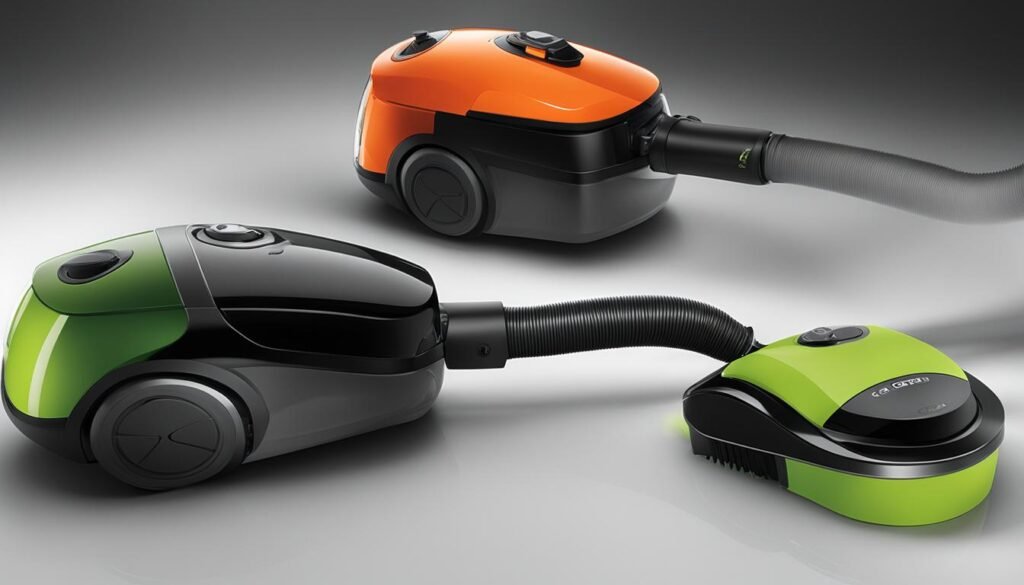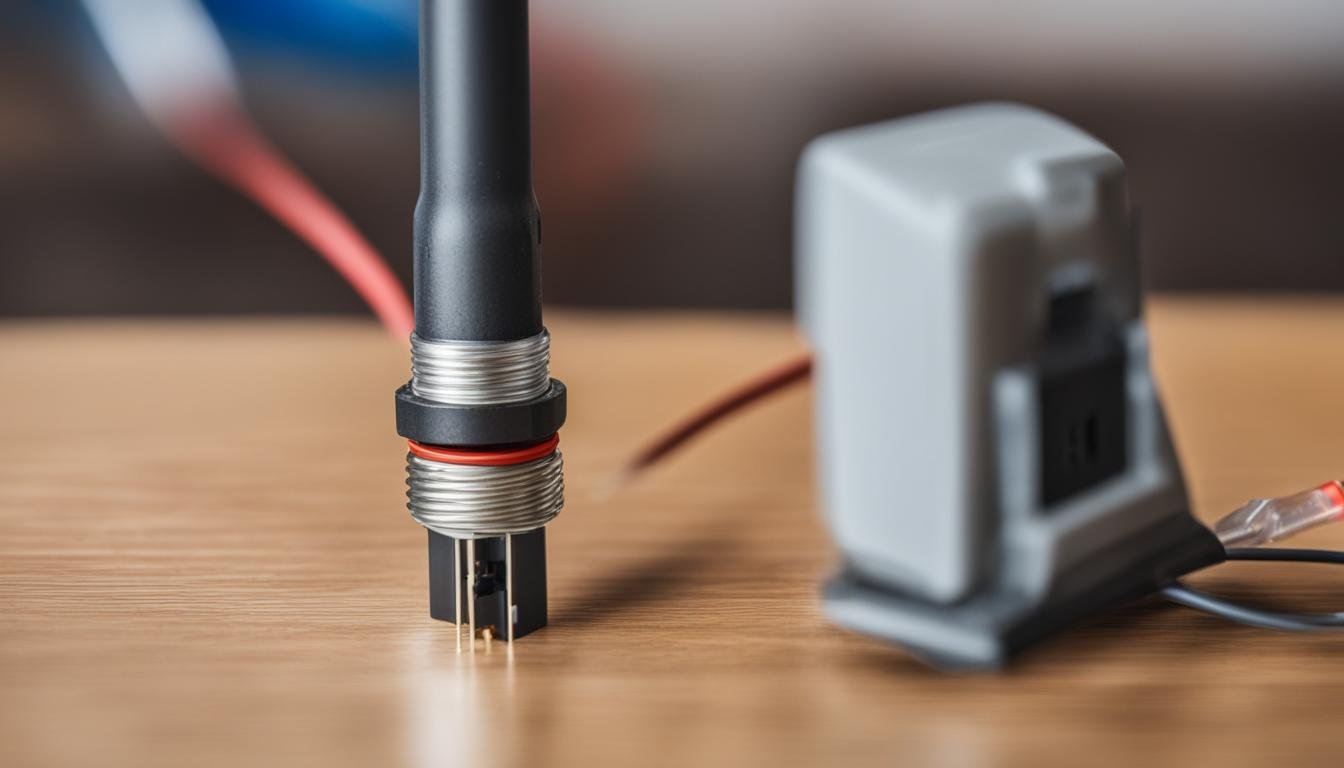Hello, I’m here to help you understand the amp fuse requirements for your vacuum cleaner. Choosing the right amp fuse is essential for both safety and optimal performance. Let’s explore the factors that determine the appropriate fuse size for your vacuum cleaner.
When considering the amp fuse for your vacuum cleaner, it’s important to take into account several factors. The specific amp rating required may vary depending on the manufacturer’s recommendations and the power rating of the vacuum cleaner. Additionally, the cable’s current rating plays a crucial role in determining the right fuse size.
Key Takeaways:
- Choosing the right amp fuse ensures safety and optimal performance.
- Consider the manufacturer’s recommendations for fuse size.
- Take into account the power rating of the vacuum cleaner.
- The cable’s current rating is essential in determining the proper fuse amp.
- Consult the vacuum cleaner’s manual for specific fuse requirements.
Understanding Vacuum Cleaner Amps and Watts
When it comes to understanding the electrical usage of vacuum cleaners, two important measurements to consider are amps and watts. Let’s take a closer look at what these terms mean and how they affect your vacuuming experience.
Amps: The Current Draw
The amp rating of a vacuum cleaner refers to the amount of electrical current it requires from the power source. Most household vacuum cleaners typically draw around 8 amps of current, ensuring efficient cleaning performance. However, upright vacuums may draw up to 12 amps, providing greater suction power for tackling stubborn dirt and debris.
Watts: The Power Consumption
The watt rating of a vacuum cleaner indicates the amount of electrical power it consumes while in use. This measurement directly affects your electricity costs. For example, a household vacuum cleaner with a power rating of 1400 watts may consume approximately 2.80 kWh (kilowatt-hours) when used for two hours daily.
The Relationship Between Amps and Watts
Understanding the relationship between amps and watts is crucial when selecting a vacuum cleaner. While a higher amp rating signifies more cleaning power, it also results in higher energy consumption and potentially higher electricity costs. It’s essential to strike a balance between the amp and watt ratings to meet your cleaning needs efficiently while minimizing energy usage.
By considering the amp and watt ratings of vacuum cleaners, you can make informed decisions that align with both your cleaning requirements and energy efficiency goals.
| Vacuum Cleaner Model | Amp Rating | Watt Rating |
|---|---|---|
| Brand A | 8 amps | 1400 watts |
| Brand B | 10 amps | 1800 watts |
| Brand C | 12 amps | 2200 watts |
Ways to Decrease Vacuum’s Electrical Usage
In order to reduce the electrical usage of your vacuum cleaner and save on energy costs, there are a few tips and tricks you can follow. By implementing these practices, you can decrease your vacuum’s energy consumption and promote a more energy-efficient cleaning routine.
- Choose an energy-efficient vacuum cleaner: When purchasing a new vacuum cleaner, opt for models that are specifically designed to be energy-efficient. Look for newer models that come with better features and higher energy efficiency ratings. These models are designed to consume less electricity while still maintaining excellent cleaning performance.
- Maintain the filters: Regularly clean or replace the filters in your vacuum cleaner. Over time, filters can become clogged with dust and debris, causing the vacuum to work harder and use more electricity. By keeping the filters clean, you can ensure optimal performance and reduce energy consumption.
- Vacuum efficiently: Develop a cleaning technique that maximizes efficiency and minimizes unnecessary energy usage. Instead of going over the same spot multiple times, make sure to thoroughly clean each area once. This will prevent you from using unnecessary power and keep your vacuuming routine more efficient.
- Consider suction capacity and airflow: When choosing a vacuum cleaner, don’t solely focus on the motor wattage. Also take into consideration the suction capacity and airflow of the vacuum. A vacuum with strong suction power and optimal airflow can clean effectively with lower power usage.
In addition to these tips, there are also alternative vacuuming options that can help decrease electrical usage. For regular cleaning tasks, you may consider using shop vacuums, which are designed for heavy-duty cleaning and often have energy-saving features. Another option to explore is a central vacuum system, which typically offers higher energy efficiency compared to traditional upright or canister vacuum cleaners. Finally, wet-dry vacuums can be useful for specific cleaning purposes and can help you minimize electricity consumption in those specific tasks.
By implementing these tips and considering alternative vacuuming options, you can reduce your vacuum’s electrical usage and promote a more energy-efficient cleaning routine.

The advancements in energy-efficient vacuum cleaners enable consumers to save on electricity costs while maintaining powerful cleaning performance.
Conclusion
In conclusion, when determining the amp rating for a vacuum cleaner fuse, several factors need to be taken into consideration. The manufacturer’s recommendation, power rating of the vacuum, and the cable’s current rating all influence the appropriate amp rating for the fuse.
It’s crucial to prioritize safety and energy efficiency when selecting the right amp fuse for your vacuum cleaner. By using a fuse with the correct amp rating, you can ensure that your vacuum operates safely and effectively without the risk of overloading or damaging the electrical system.
Understanding the amp and watt ratings of vacuum cleaners can also help you make informed decisions regarding energy consumption. By choosing an efficient vacuum cleaner and implementing energy-saving practices in your cleaning routine, such as vacuuming more efficiently and regularly cleaning or replacing the filters, you can decrease the electrical usage of your vacuum cleaner and reduce energy costs.
By considering these factors and adhering to proper fuse requirements, you can effectively maintain the performance of your vacuum cleaner while also promoting safety and energy efficiency in your household cleaning tasks.
FAQ
What amp fuse do I need for a vacuum cleaner?
The amp rating of the fuse for a vacuum cleaner can vary depending on the specific model and its power requirements. It’s generally recommended to stick with the manufacturer’s recommended fuse rating. However, most household vacuum cleaners draw around 8 amps of current, while upright vacuums may draw up to 12 amps.
How do I choose the right amp fuse for my vacuum cleaner?
To choose the right amp fuse for your vacuum cleaner, consider the manufacturer’s recommendation, the power rating of the vacuum, and the cable’s current rating. If in doubt, it’s best to consult the vacuum cleaner’s user manual or contact the manufacturer for guidance.
How can I decrease the electrical usage of my vacuum cleaner?
There are several ways to decrease the electrical usage of a vacuum cleaner. Firstly, consider choosing an efficient and energy-saving model. Look for newer models with better features and higher energy efficiency ratings. Additionally, clean or replace the filters regularly to maintain the vacuum’s performance and reduce energy consumption. You can also vacuum more efficiently by going over each area once and avoiding unnecessary cleaning of the same spot multiple times.
What should I consider when choosing a vacuum cleaner to reduce energy consumption?
When choosing a vacuum cleaner to reduce energy consumption, consider the amp and watt ratings of the vacuum. Higher amp and watt ratings indicate more power and suction, but also higher energy consumption and potentially higher electricity costs. Therefore, look for a vacuum cleaner with ratings that align with your needs and preferences, balancing power and efficiency. Additionally, consider the suction capacity and airflow of the vacuum, as these factors contribute to its cleaning ability.
Can I use a shop vacuum for regular cleaning?
Shop vacuums are designed for more heavy-duty tasks, such as cleaning workshops or construction sites. While they may have powerful suction capabilities, they may not be as suitable for regular household cleaning as they can be larger and noisier than conventional vacuum cleaners. It’s generally more practical to use a regular vacuum cleaner for everyday cleaning tasks.
What is a central vacuum system and should I consider using one?
A central vacuum system is a built-in vacuum system that is permanently installed in a building. It usually consists of a power unit that is located in a utility space, such as a garage or basement, and a network of pipes that carry the dirt and debris to the power unit. Central vacuum systems offer convenience and typically provide more powerful suction compared to traditional vacuum cleaners. However, they require professional installation and can be more expensive.
Are wet-dry vacuums suitable for regular cleaning?
Wet-dry vacuums, also known as shop vacuums, are versatile machines that can handle both liquid spills and dry debris. While they can be used for regular cleaning tasks, they are generally more commonly utilized when specific cleaning needs arise, such as cleaning up water leaks or flooding, or tackling construction-related messes. For day-to-day household cleaning, a traditional vacuum cleaner is usually more practical and easier to maneuver.





Leave a Reply